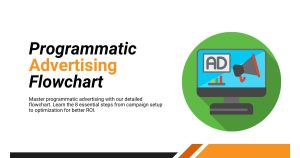Cookieless Programmatic Advertising: How to Thrive in a Privacy-First World

As third-party cookies fade into history, programmatic advertisers face a pivotal challenge: maintaining precision targeting and measurement without infringing on user privacy. This comprehensive guide dives deep into the cookieless future of programmatic advertising, exploring the technologies, strategies, and best practices to help brands not just survive, but thrive in a privacy-first world.
Understanding the End of Third-Party Cookies
Privacy regulations like GDPR and CCPA, combined with browser initiatives from Chrome, Safari, and Firefox, have accelerated the demise of third-party cookies. By mid-2024, major browsers will limit or entirely block third-party tracking cookies. For programmatic advertisers, this means the traditional cookie-based ID solutions for audience targeting, frequency capping, and attribution must evolve. Brands that wait too long risk losing reach, relevancy, and the ability to measure campaign performance accurately.
What Is Cookieless Programmatic Advertising?

Cookieless programmatic advertising relies on alternative identifiers, contextual signals, and first-party data to reach and engage audiences without third-party cookies. Instead of tracking individual users across the open web, cookieless approaches focus on aggregated signals, publisher-provided data clean rooms, cohort-based targeting, and direct partnerships that respect user consent and privacy preferences.
Key Technologies Powering Cookieless Programmatic
- Contextual Targeting: Analyzing page content, keywords, and sentiment to serve relevant ads in real time.
- First-Party Data Activation: Leveraging CRM data, email lists, and on-site behavior to build deterministic and probabilistic audience segments.
- Identity Graphs & Universal IDs: Solutions like Unified ID 2.0, LiveRamp RampID, and IAB DigiTrust link logged-in consumer identifiers across platforms while honoring privacy controls.
- Clean Rooms & Data Collaboration: Secure environments where brands and publishers share anonymized data to enrich targeting without exposing raw PII.
- Cohort-Based Targeting: Utilizing privacy sandbox proposals, Topics API, and interest-based cohorts to group users by affinity instead of individual IDs.
Building a Privacy-First Programmatic Strategy

- Audit & Map Data Sources: Inventory first-party datasets, publisher partnerships, and any existing probabilistic IDs.
- Segment with Context: Define high-value contextual categories—such as travel, finance, or technology—to reach relevant audiences at scale.
- Integrate Identity Solutions: Test universal IDs like UID2 or RampID to maintain addressability in a cookieless environment.
- Optimize Creative & Personalization: Tailor ad messaging and visuals based on cohort attributes, contextual themes, and first-party signals.
- Measure Holistically: Combine platform analytics with incrementality testing, media mix modeling, and clean room attribution for a complete performance view.
Top Cookieless Programmatic Platforms
Several demand-side platforms (DSPs) and ad exchanges have built robust cookieless capabilities. Here are five to consider:
- The Trade Desk with Unified ID 2.0 and deterministic login-based targeting.
- LiveRamp RampID for seamless data collaboration and identity resolution.
- Amazon Publisher Services is leveraging first-party shopping signals and in-market cohorts.
- Index Exchange with Shared ID and publisher-controlled data clean rooms.
- PubMatic Identity Hub combines consented IDs and contextual targeting at scale.
Case Study: Brand X’s Cookie-Free Success
Brand X, a global travel platform, faced declining performance after browser privacy updates disrupted its cookie-based retargeting. By shifting to a cookieless strategy—integrating contextual segments with their first-party email list and testing Unified ID 2.0—Brand X saw a 30% increase in click-through rate and a 25% lift in booking conversions. Incrementality tests confirmed that 60% of new bookings were driven by the cookieless campaign, compared to the legacy cookie-based approach. This case illustrates how a multi-faceted shift can unlock strong ROI in the post-cookie era.
Measuring Cookieless Campaign Performance
Traditional attribution models reliant on cookie tracking give way to holistic measurement approaches. Incrementality testing, media mix modeling, and unified analytics platforms provide deeper insights into campaign impact. Brands should adopt privacy-safe data stitching in clean rooms and leverage aggregated reporting from publishers and DSPs. Monitoring metrics like view-through rate, lift studies, and brand sentiment can reveal qualitative and quantitative improvements without relying on individual-level identifiers.
Challenges and Best Practices
Transitioning to cookieless programmatic introduces challenges such as fragmentation between identity solutions, potential scale limitations, and the need for new measurement frameworks. To navigate these, marketers should maintain a diversified partner ecosystem, prioritize transparent consent mechanisms, and invest in internal skill-building. Establish clear governance around data privacy, continuously test new technologies, and align on success metrics that focus on incremental business outcomes rather than last-click performance alone.
The Future of Cookieless Advertising
The privacy-first trajectory will continue to evolve with browser Privacy Sandbox initiatives, decentralized identity frameworks, and advances in AI-driven contextual intelligence. Brands that adopt a flexible, privacy-centric approach today will be best positioned to leverage emerging opportunities, such as edge computing for real-time personalization and blockchain-based identity verification. As the ecosystem matures, collaboration between advertisers, publishers, and technology providers will be crucial to sustaining growth in a cookieless world.
Conclusion
The shift to cookieless programmatic advertising marks a critical inflection point for digital marketers. By embracing alternative identifiers, contextual targeting, and rigorous measurement practices, brands can build more respectful, effective, and resilient ad campaigns. Start by auditing your data, piloting identity solutions, and investing in privacy-safe analytics. The cookieless future is not a barrier—it’s an opportunity to innovate and drive better business outcomes in alignment with user privacy expectations.





